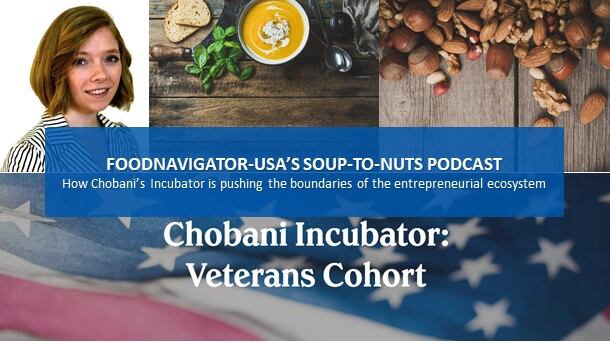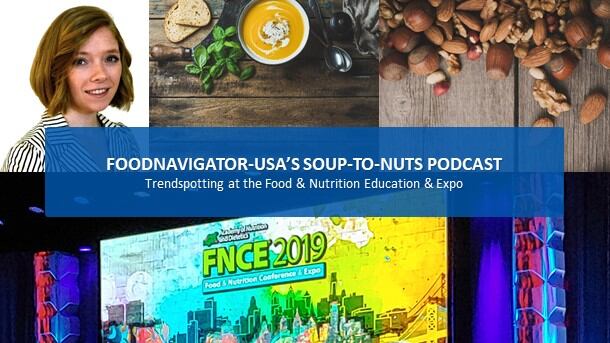According to the Crop Trust, which is an international organization tasked with safeguarding crop diversity, our reliance on such a limited range of crops means the food supply is vulnerable to drought, pests, disease and a changing climate.
Likewise, the world’s current over-reliance on rice, maize, wheat and potato for 60% of our calories is already taking a toll on biodiversity. According to the Crop Trust, the varieties of corn available in Mexico are down 80% since 1930, and India has lost 90% of its strains of rice and the US has lost 90% of the fruit and vegetable varieties that once were available here.
In response to this crisis, the Crop Trust has launched the Food Forever initiative which calls on politicians, farmers, chefs, businesses and individuals “to drive positive change in the way we conserve, grow, sell and consume crop and livestock diversity.”
In this episode of FoodNavigator-USA’s Soup-To-Nuts podcast, Food Forever champions Chef Erik Oberholtzer and the CEO of Colorado-based Choice Markets Mike Fogerty discuss the extent of the threat to the world’s biodiversity and the risk it poses to people and planet. They also share how they, and others across the food and beverage industry, are helping to preserve biodiversity in a way that also creates new marketing opportunities for innovative entrepreneurs and established brands alike.
[Editor’s Note: Never miss another episode of FoodNavigator-USA’s Soup-To-Nuts Podcast. Subscribe on iTunes.]
A road paved with good intentions
According to Oberholtzer, the world’s current reliance on just 12 crops for 80% of calories stems in large part from good intentions to feed more people for less and to improve farmers’ lives by creating a production system that was more predictable. Unfortunately, he explains, these efforts also triggered unintentional, negative consequences.
“As agriculture became industrialized and commoditized and there was an effort to feed as many people as possible for profit at scale and with predictable shelf life, whether that was in transport on on the actual shelf … there was a shift from family or regional heirloom cropping to much bigger, massive farms that were growing for predictive commodity markets,” he explained.
He also notes that the resulting monocropping is taking a toll on the health of the planet and, when combined with climate changes, threatens the long-term safety of the world’s food supply.
“As the climate begins to shift, we need more plant diversity, seed stock diversity to begin to design for new growing conditions. Right now we are at risk” in a way that mirrors the Great Irish Famine, which came after a late blight struck Ireland’s potato crop resulting in mass starvation and disease from 1845 to 1849 that caused the population to fall 20-25% due to mortality and emigration.
Even as the Crop Trust and Food Forever strive to raise awareness about the risk of monocropping, Oberholtzer says he fears current food production trends are perpetuating the problem. In particular, he says he worries that food manufacturers’ interpretation of the plant-based trend could lead to an over-reliance on peas.
But as Fogerty points out, subtle changes in how CPG manufacturers, restaurateurs and others respond to emerging trends, including plant-based, also could turn the tide on the current crises and encourage biodiversity by introducing a broader range of ingredients to consumers at a time when many already have shown a willingness to try new foods.
Encouraging diversity
To further encourage a more diverse diet, Fogerty suggested retailers re-think not just the food they offer, but also how it is presented. For example, he explained that Choice Markets does this in part by eschewing the large format store that were built for suburban America in favor of a smaller hybrid model that is a cross between a fast casual restaurant, a small format grocery and a convenience store.
He explained that as a chain that offers both ready to eat foods and traditional packaged foods, Choice Markets is in a unique position to show consumers how to cook ingredients with which they might be unfamiliar in the prepared food section and then also stock them on shelves.
Oberholtzer is helping Choice Markets develop menus that introduce new ingredients based on the success in restaurant chain Tender Greens, which he started 15 years ago to help “democratize good food.”
Emerging ingredients to watch
As this movement continues to evolve and consumers become even more adventuresome about what they eat, Oberholtzer says he sees a few new key ingredients gaining traction among some of the more familiar staples.
The first is Fonio, which Oberholtzer explains is a nutrient-dense, gluten-free cereal that is easy to prepare, versatile and has a strong supply chain. Another key ingredient to watch is moringa, which companies like Kuli Kuli have helped bring to consumers’ attention in recent years. And a third ingredient that Oberholtzer says he is watching pique consumers’ interest is jackfruit.
Fogerty also notes that retailers, entrepreneurs and restaurateurs can also support biodiversity by using more common or already familiar ingredients more but in new ways and as alternatives for some of the more frequently used ingredients. For example, subbing a spaghetti squash for traditional pasta in fall dishes.
Oberholtzer also sees an marketing opportunity for CPG companies to draw consumer awareness to different cultures and drive demand for more biodiverse crops by using multiple ingredients from the same region.
As these potential solutions illustrate, supporting biodiversity can be just as good for business as it can be for the health of the planet and people.




